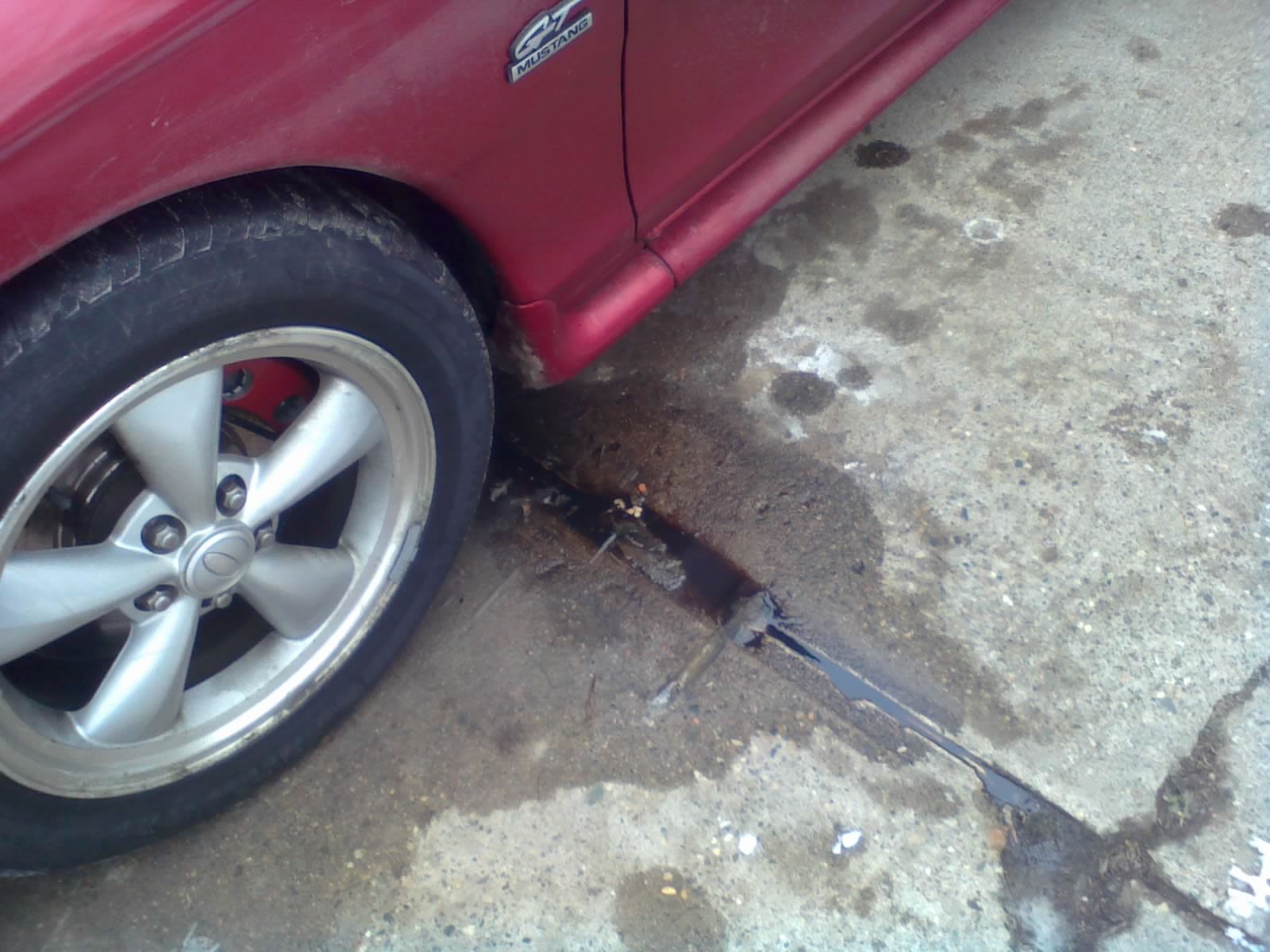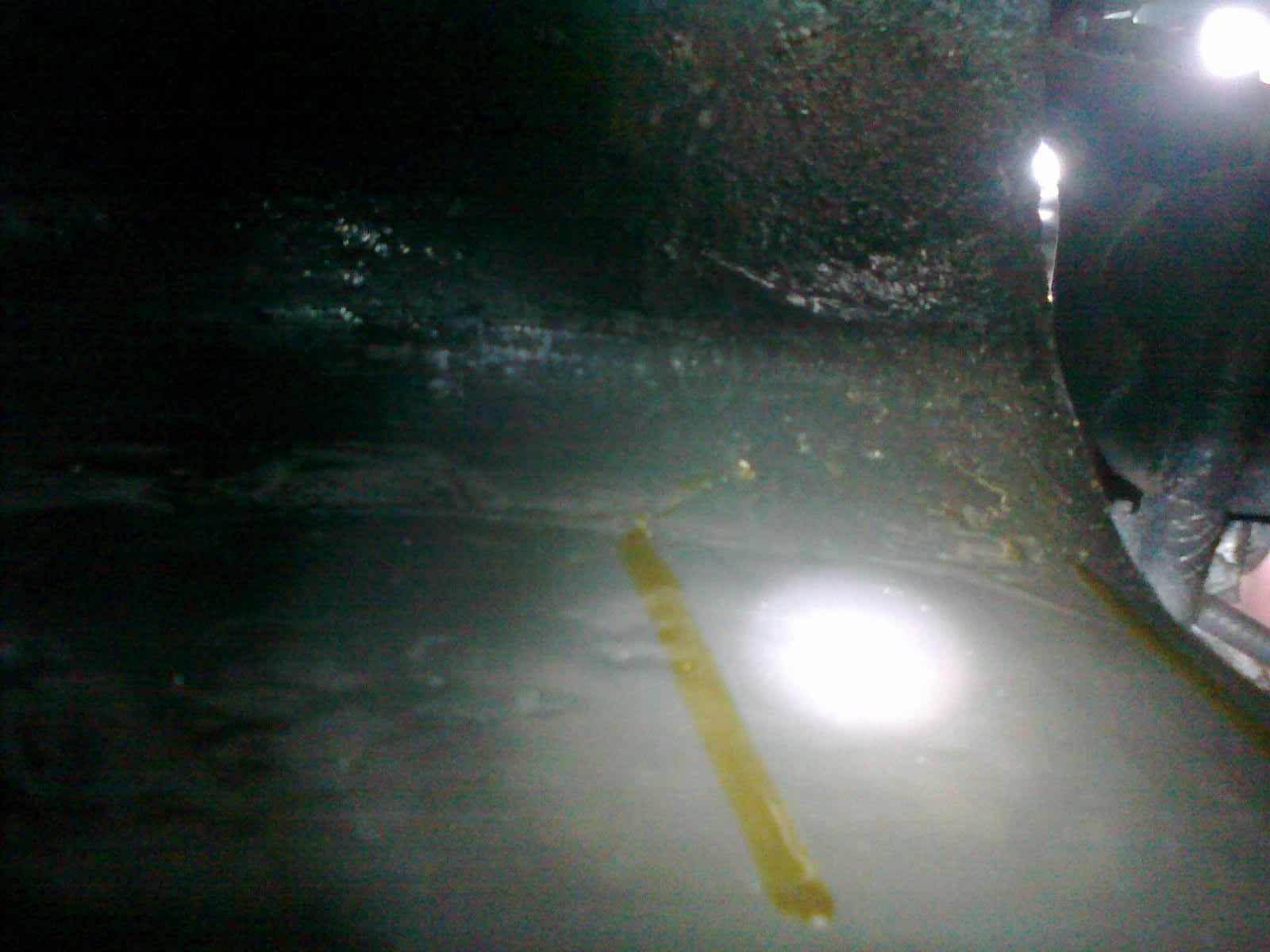 "Urambo Tauro" (urambotauro)
"Urambo Tauro" (urambotauro)
12/22/2016 at 19:00 ē Filed to: wrenching, blog, discussion
 1
1
 10
10
 "Urambo Tauro" (urambotauro)
"Urambo Tauro" (urambotauro)
12/22/2016 at 19:00 ē Filed to: wrenching, blog, discussion |  1 1
|  10 10 |

From my pans, from my pans agaaain... †
The hemorrhage has !!!error: Indecipherable SUB-paragraph formatting!!! . Didnít take long, did it?
Maybe going from below zero (įF), up to operating temperature, and back again multiple times was too much fluctuation for the bond to handle after all. And here I was so proud of my nice clean prep-job, too. I really wanted it to hold on until the spring.

Close-up view of the pan, looking upward. Bottom half of this pic is the front of the main ďhumpĒ. Top half is the rusty underside of the panís ďsaddleĒ (not treated with epoxy). Oil is leaking down from the top of my repair, where the epoxy is thinnest.
Oh, well. It served itís purpose: giving me time to formulate a plan. Who would have thought it would let loose just one week after
!!!error: Indecipherable SUB-paragraph formatting!!!
?
Iím going to let a shop handle the work. Just gotta decide what to do about parts. See, because I do a lot of my own wrenching, Iíve grown picky about avoiding cheap crap, and getting good quality parts for my car. Iíd like to pick out my own parts, and the shop is fine with that. Unfortunately, they canít warranty their work if I do.
They want to install regular rubber engine mounts, which is great. I didnít want to put poly in there anyway. The oil pan they want to use is another story, though. Instead of a pan painted with a factory-like finish (which appears to be a gloss black paint), the pan they would use comes primed a black color, over which they apply some kind of undercoating.
Undercoating on an engine? Never heard of that before. They say that itís a waxy compound, not tar, and that theyíve been getting good results out of it. Anybody heard of this?
 S65
> Urambo Tauro
S65
> Urambo Tauro
12/22/2016 at 12:07 |
|
Degenerate oil pan
 RamblinRover Luxury-Yacht
> Urambo Tauro
RamblinRover Luxury-Yacht
> Urambo Tauro
12/22/2016 at 12:07 |
|
There are probably undercoats that would not soften and get narsty with exposure to oil. Iím not sure they would find the one that wouldnít. Also, I donít know anything about how much oil cools in the pan, but undercoating would tend to impede that, and cooler oil is generally considered good.
 jimz
> Urambo Tauro
jimz
> Urambo Tauro
12/22/2016 at 12:14 |
|
man I hated those ďdouble humpĒ oil pans on the Fox bodies. I didnít realize the SN95 still had it; I had mostly left wrenching by that time.
 Highlander-Datsuns are Forever
> Urambo Tauro
Highlander-Datsuns are Forever
> Urambo Tauro
12/22/2016 at 12:16 |
|
Usually you wold pait an oil pan with something like a heat resistant epoxy, really thin, maybe 4-6 mils. You want the cooling effect. I wouldnít want some thick coating that will hinder cooling.
 Urambo Tauro
> jimz
Urambo Tauro
> jimz
12/22/2016 at 12:38 |
|
Yeah, they kept the humps around a little longer. Iíve never had it open, but the pictures Iíve seen show the smaller front hump to be necessary for pump fitment, while the pickup sits down in the deeper rear hump.
I can appreciate GM a little more now for putting everything (distributor, pump, pickup) at the rear of the SBC.
 jimz
> Urambo Tauro
jimz
> Urambo Tauro
12/22/2016 at 12:42 |
|
yeah, if you looked at Fordís V8 engine lineup through the 1970s, youíd think there were six different companies designing them.
 ITA97, now with more Jag @ opposite-lock.com
> Urambo Tauro
ITA97, now with more Jag @ opposite-lock.com
> Urambo Tauro
12/22/2016 at 12:51 |
|
Good call on rubber engine mounts. While I love poly for many things, I would not do poly for engine mounts again on a street driven car.
 DirtyBird
> Urambo Tauro
DirtyBird
> Urambo Tauro
12/22/2016 at 13:56 |
|
If you think those are bad try a 98-02 fbody. Had to raise the engine and drop the k member to barely squeeze the pan out
 shop-teacher
> jimz
shop-teacher
> jimz
12/22/2016 at 18:55 |
|
Thatís probably the biggest reason why Chevy V8's became the motor swap of choice. They arenít necessarily better, but they were largely the same for decades.
 Dr. Zoidberg - RIP Oppo
> Urambo Tauro
Dr. Zoidberg - RIP Oppo
> Urambo Tauro
12/22/2016 at 22:26 |
|
Itís starting to look like an environmental disaster underneath my vehicle. Seems be leaking faster in the winter.